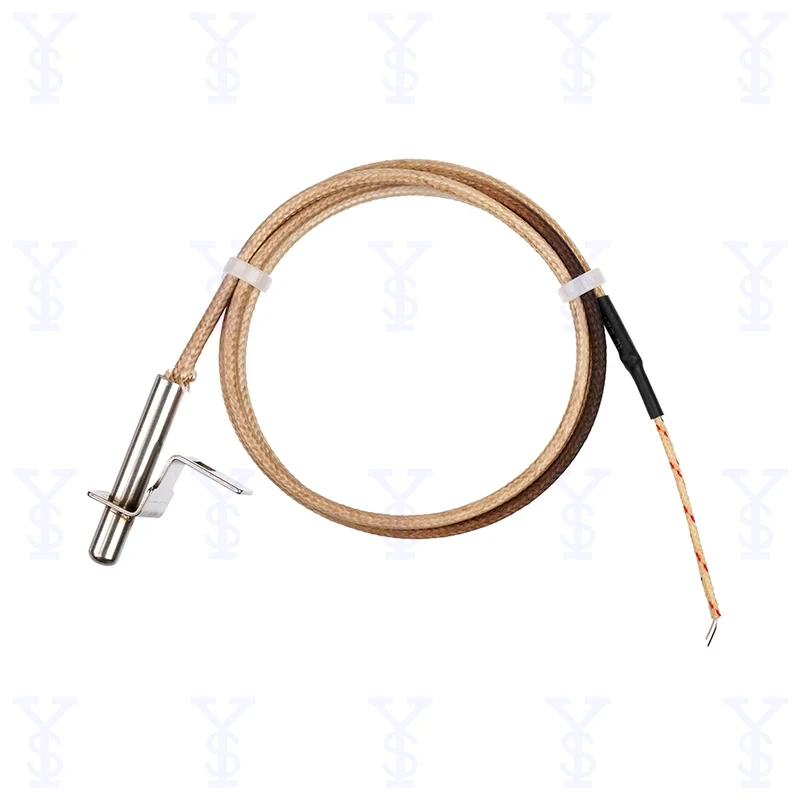6-20 个字符(仅限字母加数字)
密码不一致


Understanding Type K Thermocouples: The Essential Guide
When it comes to measuring temperature in various industrial applications, thermocouples play a crucial role. Among the different types of thermocouples available, the type K thermocouple stands out due to its versatility, accuracy, and affordability. In this blog post, we'll delve deep into what type K thermocouples are, how they work, their advantages, and where they are commonly used.
What Is a Thermocouple?
Before we dive into the specifics of type K thermocouples, let's start with the basics. A thermocouple is a sensor that measures temperature. It consists of two different metals joined at one end, creating a junction. When the junction experiences a temperature change, it generates a voltage that corresponds to that temperature difference. This principle is known as the Seebeck effect.
How Does a Type K Thermocouple Work?
A type K thermocouple is made of two different metals: Chromel (nickel-chromium alloy) and Alumel (nickel-aluminum alloy). When these two metals are joined together, they form a thermoelectric junction. The unique combination of these materials gives type K thermocouples their distinctive properties.
Creating the Junction: The two metal wires are connected at one end to create a junction, while the other ends are connected to a measuring device. This junction is where the temperature measurement occurs.
Voltage Generation: When the junction is heated or cooled, it generates a small voltage. The amount of voltage produced is proportional to the temperature difference between the junction and the reference point (usually where the wires are connected to the measuring device).
Temperature Measurement: The measuring device (often a digital voltmeter or a data acquisition system) reads the voltage and converts it into a temperature reading using known calibration data for the type K thermocouple.
Temperature Range and Accuracy
One of the primary reasons for the popularity of type K thermocouples is their wide temperature range. They can measure temperatures from about -200°C to +1260°C (-328°F to +2300°F). This broad range makes them suitable for various applications, from cryogenics to high-temperature processes.
In terms of accuracy, type K thermocouples generally have an accuracy of ±2.2°C or ±0.75% of the reading, whichever is greater. While they may not be the most precise thermocouples available, their reliability and cost-effectiveness make them a popular choice.

Advantages of Type K Thermocouples
Versatility: Type K thermocouples can be used in a wide range of environments, including oxidizing, reducing, and inert atmospheres. This adaptability makes them ideal for many industries.
Cost-Effective: Compared to other thermocouple types, type K thermocouples are relatively inexpensive, making them accessible for various applications, from hobbyist projects to large-scale industrial processes.
Durability: The materials used in type K thermocouples provide good resistance to oxidation, ensuring long-lasting performance, even in challenging environments.
Ease of Use: With straightforward installation and operation, type K thermocouples are user-friendly, making them suitable for both beginners and experienced professionals.
Applications of Type K Thermocouples
The versatility of type K thermocouples makes them widely used in many industries and applications. Here are some notable examples:
Manufacturing and Processing: In industries such as metalworking and plastics, type K thermocouples are commonly used to monitor temperatures during processes like welding, forging, and molding. Accurate temperature control ensures quality and consistency in the final products.
Food Industry: In food processing and cooking, maintaining the correct temperature is crucial for food safety and quality. Type K thermocouples help monitor temperatures in ovens, refrigerators, and other equipment to ensure compliance with safety standards.
HVAC Systems: In heating, ventilation, and air conditioning (HVAC) systems, type K thermocouples are used to monitor air and fluid temperatures. This information is essential for optimizing system performance and energy efficiency.
Automotive Industry: In automotive manufacturing, type K thermocouples are employed to monitor engine temperatures, ensuring optimal performance and safety.
Laboratories: In scientific research and laboratory settings, type K thermocouples are widely used for precise temperature measurements during experiments and tests.
Installation and Maintenance Tips
To ensure accurate and reliable readings from type K thermocouples, proper installation and maintenance are essential. Here are some tips to keep in mind:
Proper Placement: Ensure that the thermocouple junction is placed correctly in the area you want to measure. Avoid exposing it to drafts or direct contact with heat sources that may skew the readings.
Use the Right Connector: When connecting the thermocouple to a measuring device, use connectors specifically designed for type K thermocouples. This helps avoid interference and ensures accurate readings.
Regular Calibration: Like all measuring instruments, type K thermocouples may drift over time. Regular calibration against a known standard can help maintain accuracy.
Inspect for Damage: Periodically check the thermocouple for any signs of wear, corrosion, or damage. Replace it if necessary to ensure reliable performance.
Conclusion
Type K thermocouples are a versatile and cost-effective solution for temperature measurement in a wide range of applications. Their unique construction allows for accurate temperature readings across a broad range, making them suitable for industries from manufacturing to food processing. Understanding how type K thermocouples work, their advantages, and best practices for installation and maintenance will help you make the most of this essential tool.
Whether you're a hobbyist looking to monitor temperatures in your projects or a professional in need of reliable temperature measurements, type K thermocouples provide an accessible and efficient solution. As technology continues to evolve, we can expect to see even more innovations in temperature measurement, but the reliability and versatility of type K thermocouples will undoubtedly keep them at the forefront for years to come.

